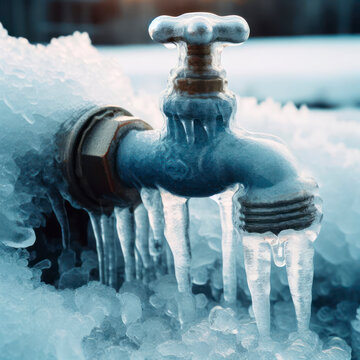Almost everyone may have his or her own theory on the subject of Prevent Frozen Pipes .

Cold weather can damage your pipes, especially by freezing pipelines. Below's exactly how to avoid it from occurring and what to do if it does.
Introduction
As temperatures decrease, the danger of icy pipes boosts, potentially bring about costly repair work and water damage. Comprehending just how to avoid frozen pipes is important for house owners in chilly climates.
Avoidance Tips
Protecting susceptible pipes
Cover pipes in insulation sleeves or use warm tape to secure them from freezing temperature levels. Focus on pipes in unheated or exterior locations of the home.
Heating techniques
Keep interior spaces effectively warmed, specifically locations with pipes. Open up cupboard doors to enable cozy air to distribute around pipes under sinks.
Just how to determine icy pipes
Seek decreased water circulation from taps, unusual smells or noises from pipelines, and noticeable frost on subjected pipelines.
Long-Term Solutions
Structural adjustments
Take into consideration rerouting pipelines far from exterior walls or unheated locations. Add additional insulation to attic rooms, cellars, and crawl spaces.
Updating insulation
Buy premium insulation for pipelines, attic rooms, and wall surfaces. Proper insulation assists preserve constant temperatures and decreases the risk of frozen pipelines.
Shielding Exterior Pipes
Yard hoses and exterior taps
Detach and drain garden tubes prior to winter season. Install frost-proof faucets or cover exterior faucets with insulated caps.
Recognizing Frozen Pipelines
What triggers pipes to ice up?
Pipelines freeze when revealed to temperatures below 32 ° F (0 ° C) for extended durations. As water inside the pipelines freezes, it expands, putting pressure on the pipeline wall surfaces and possibly triggering them to burst.
Threats and problems
Frozen pipes can bring about water system interruptions, residential property damage, and pricey repair work. Burst pipelines can flood homes and create substantial structural damages.
Signs of Frozen Water Lines
Identifying frozen pipes early can stop them from bursting.
What to Do If Your Pipes Freeze
Immediate activities to take
If you think icy pipelines, keep faucets open up to soothe stress as the ice melts. Use a hairdryer or towels taken in warm water to thaw pipes slowly.
Conclusion
Protecting against icy pipes calls for positive steps and quick responses. By recognizing the reasons, signs, and safety nets, property owners can protect their plumbing throughout cold weather.
6 Proven Ways to Prevent Frozen Pipes and Protect Your Home
Disconnect and Drain Garden Hoses
Before winter arrives, start by disconnecting your garden hoses and draining any remaining water. Close the shut-off valves that supply outdoor hose bibs and leave the outdoor faucet open to allow any residual water to drain. For extra protection, consider using faucet covers throughout the colder months. It’s also important to drain water from any sprinkler supply lines following the manufacturer’s directions.
Insulate Exposed Pipes
Insulating your pipes is an effective way to prevent freezing. Pipe insulation is readily available at home improvement stores and is relatively inexpensive. Pay close attention to pipes in unheated areas such as the attic, basement, crawl spaces, or garage. Apply foam insulation generously to create a buffer against the cold. You can also wrap your pipes in heat tape or thermostat-controlled heat cables for added warmth.
Seal Air Leaks
Inspect your home for any cracks or openings that could let in cold air. Seal any holes around the piping in interior or exterior walls, as well as the sill plates where your home rests on its foundation. Additionally, make sure to keep your garage door closed unless you’re entering or exiting. Leaving it open creates a significant air leak that can lead to frozen pipes.
Allow Warm Air Circulation
During cold snaps, it’s essential to allow warm air to circulate evenly throughout your home. Leave interior doors ajar to promote better airflow. Open kitchen and bathroom cabinets to help distribute heat consistently around the rooms. If you have small children or pets, be sure to remove any household chemicals or potentially harmful cleaners from open cabinets for safety.
Let Faucets Drip
A small trickle of water can make a big difference in preventing ice formation inside your pipes. When temperatures drop significantly, start a drip of water from all faucets served by exposed pipes. This continuous flow helps prevent the water from freezing. Additionally, running a few faucets slightly can relieve pressure inside the pipes, reducing the chances of a rupture if the water inside does freeze.
https://choateshvac.com/6-proven-ways-to-prevent-frozen-pipes-and-protect-your-home/

I recently found that post about 6 Ways to Prevent Frozen Pipes when doing a lookup on the search engines. Are you aware of anybody else who is looking into the niche? Take a moment to share it. Thanks a lot for your time spent reading it.
Click Here